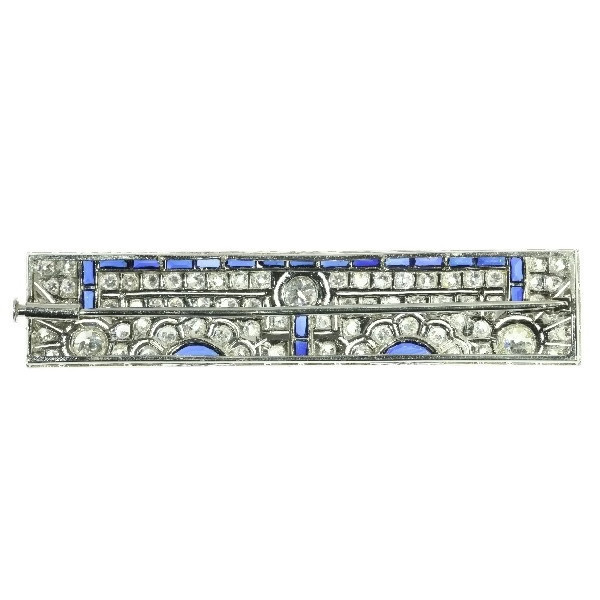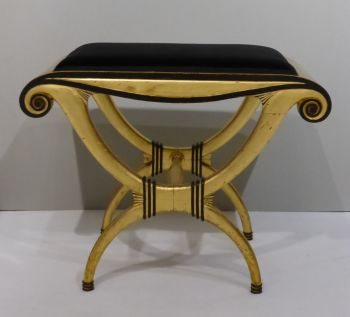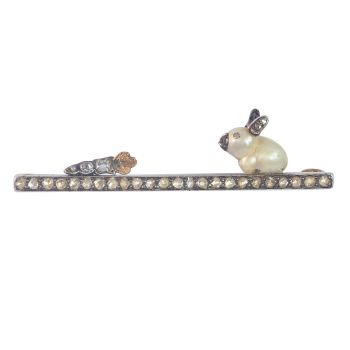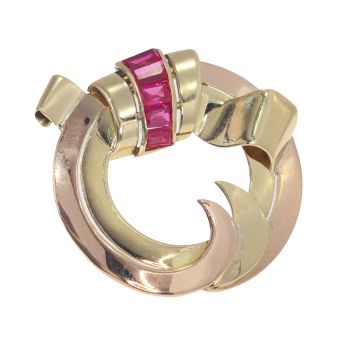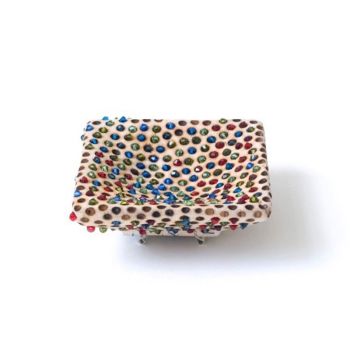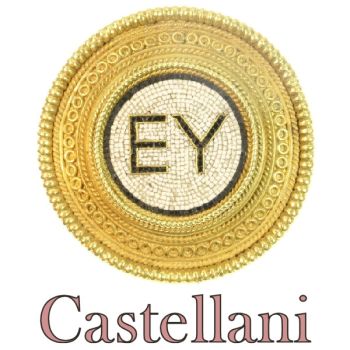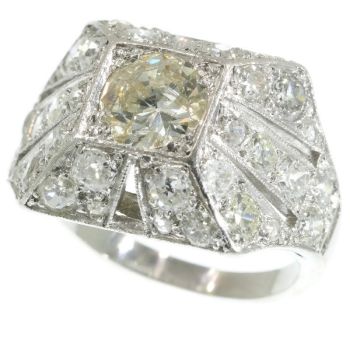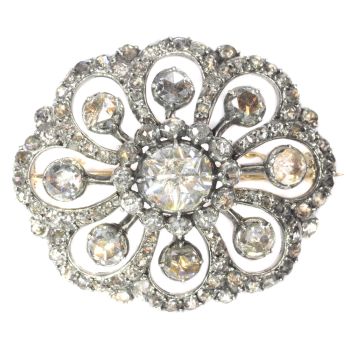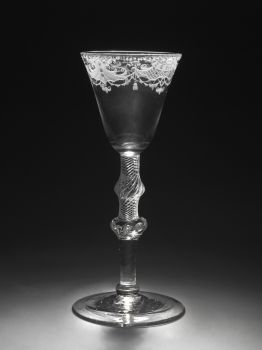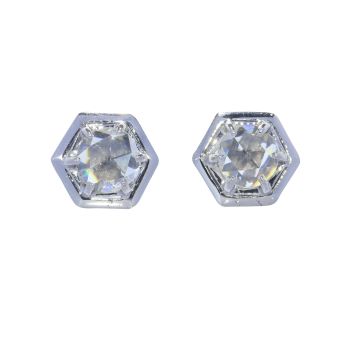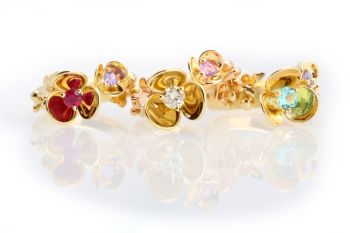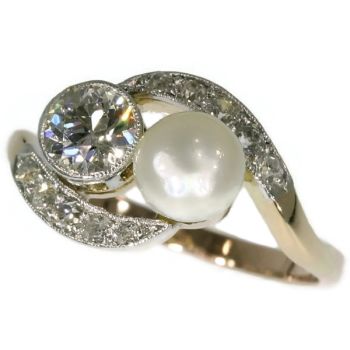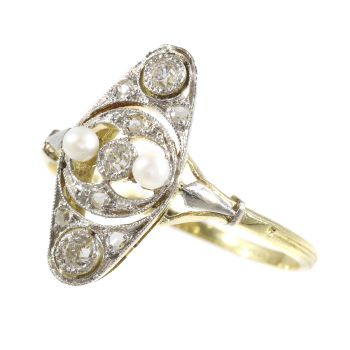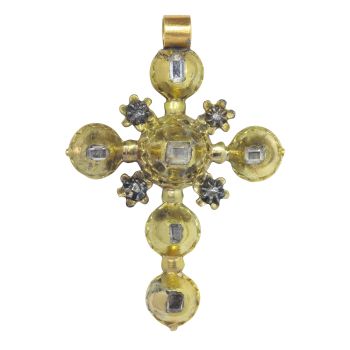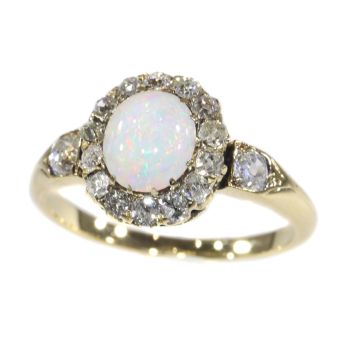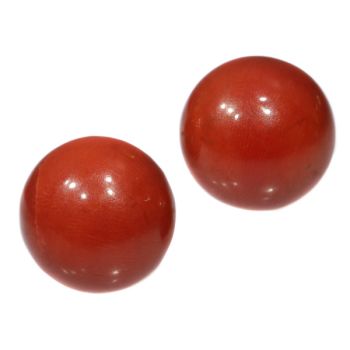Devi vedere! Spilla Art Déco in platino dal design robusto con diamanti e zaffiri 1920
Artista Sconosciuto
DiamanteZaffiroPietra preziosa
€ 14.000
Adin Fine Antique Jewellery
- A proposito di opere d'arte
This Art Deco platinum brooch is gifted with a dispersive allure by the 72 old European and single brilliant cut diamonds pave set in a millegrain pierced geometrical design. A row of 19 rectangular cabochon sapphires connect three grand old European cut diamonds while two peeking half-moon cabochon cut sapphires surrounded by diamond-encrusted flower petals give the final feminine touch to this marvellous antique jewel.
Antique jewelry object group: bar brooch
Condition: excellent condition
- (more info on our condition scale)
Country of origin:Although it does not carry any legible control marks we believe this to be of Belgian origin.
Style: Art Deco - Art Deco is an eclectic artistic and design style which had its origins in Paris in the first decades of the 20th century. The style originated in the 1920s and continued to be employed until after World War II. The term "art deco" first sawwide use after an exhibition in 1966, referring to the 1925 Exposition Internationale des Arts Décoratifs et Industriels Modernes that was the culmination of high-end style moderne in Paris. Led by the best designers in the decorative arts such as fashion, and interior design, Art Deco affected all areas of design throughout the 1920s and 1930s, including architecture and industrial design, as well as the visual arts such as painting, the graphic arts and film. At the time, this style was seen aselegant, glamorous, functional and modern.
- See also: Art Decoor more info on styles
Style specifics: Abstract motives and geometrical forms are quite typical for the Art Deco period. Art Deco moved away from the soft pastels and organic forms of its style predecessor, Art Nouveau, and embraced influences from many different styles and movements of the early 20th century, including Neoclassical, Constructivism, Cubism, Modernism, and Futurism. Its popularity peaked in Europe during the Roaring Twenties and continued strongly in the United States through the 1930s. Although many design movements havepolitical or philosophical roots or intentions, Art Deco was purely decorative.
Period: ca. 1920
- (events and facts in 1920)
Material: platinum
- (more info on precious metals)
Diamonds:Three old European cut diamonds with a total estimated weight of approx. 1.20 crt.72 old European cut and single brilliant cut diamonds (also called 8/8) with a total estimated weight of approx. 3.24 crt.
Note: All diamond weights, color grades and clarity are approximate since the stones were not removed from their mounts to preserve the integrity of the setting.
Total diamond weight: approx. 4.44 crt.
Precious stones: 21 cabochon polished sapphires. We did not check if the sapphires are lab produced or not as this information has no influence on the value of this jewel. Natural sapphires and lab produced sapphires were both used in this era, rather more for their effect than for their intrinsic value.
- (more info on precious stones)
Birthstones: Diamond is the birthstone (or month stone) for April and sapphire for September.
- (more info on birthstones)
Hallmarks: No trace.
- (more info on hallmarks)
Dimensions: 7,12 cm (2,80 inch) x 1,47 cm (0,58 inch)
Weight: 13,80 gram (8,87 dwt)
Reference Nº: 14119-0007
Copyright photography: Adin, fine antique jewelry
- A proposito di opere artista
Può succedere che un artista o un creatore sia sconosciuto.
Alcune opere non sono determinate da chi sono state realizzate o sono state realizzate da (un gruppo di) artigiani. Esempi sono statue dell'antichità, mobili, specchi o firme non chiare o leggibili ma anche alcune opere non sono affatto firmate.
Inoltre puoi trovare la seguente descrizione:
•"Attribuito a …." A loro avviso probabilmente opera dell'artista, almeno in parte
•“Studio di ….” o “Officina di” A loro avviso un'opera eseguita nello studio o nella bottega dell'artista, eventualmente sotto la sua supervisione
•“Cerchio di…” A loro avviso un'opera del periodo dell'artista che mostra la sua influenza, strettamente legata all'artista ma non necessariamente al suo allievo
•"Stile di..." o "Seguace di..." A loro avviso un'opera eseguita nello stile dell'artista ma non necessariamente da un allievo; può essere contemporaneo o quasi contemporaneo
•“Modalità di…” A loro avviso un'opera nello stile dell'artista ma di epoca successiva
•"Dopo …." A loro avviso una copia (di qualsiasi data) di un'opera dell'artista
•“Firmato…”, “Datato…” o “Iscritto” A loro avviso l'opera è stata firmata/datata/inscritta dall'artista. L'aggiunta di un punto interrogativo indica un elemento di dubbio
•"Con firma....", "Con data...", "Con iscrizione..." o “Riporta firma/data/iscrizione” a loro avviso la firma/data/iscrizione è stata aggiunta da qualcuno diverso dall'artista
Sei interessato ad acquistare questa opera d'arte?
Artwork details
Related artworks
- 1 - 4 / 12
- 1 - 4 / 24
- 1 - 4 / 24
Artiste Inconnu
Un rare filigrane un gobelet retortoli1550 - 1600
Prix sur demandePeter Korf de Gidts - Antiquairs
1 - 4 / 24- 1 - 4 / 24
- 1 - 4 / 12




